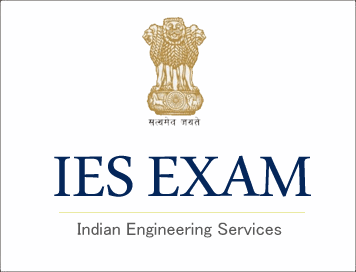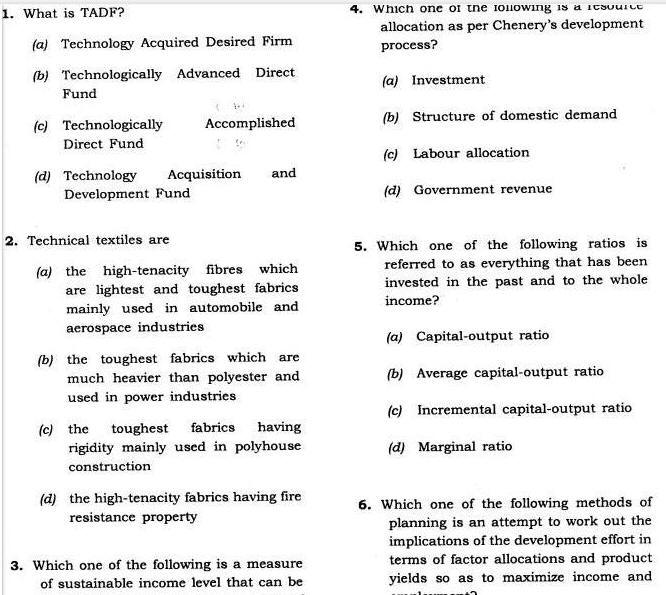
संघ लोक सेवा आयोग सिविल सेवा - मुख्य परीक्षा (Download) UPSC IAS Mains Exam 2019 समाजशास्त्र (Paper-2)
Exam Name: UPSC IAS Mains SOCIOLOGY (समाजशास्त्र) (Paper-2)
Marks: 250
Time Allowed: 3 Hours.
खण्ड 'A'
Q1. निम्नलिखित प्रत्येक प्रश्न का संक्षिप्त उत्तर लगभग 150 शब्दों में एक समाजशास्त्रीय परिप्रेक्ष्य में लिखिए :
(a) कुर्गों के धर्म समाज पर श्रीनिवास के विचारों का विस्तारण कीजिए|
(b) भारत में कृषक संघर्ष में तेभागा आन्दोलन योगदानों को स्पष्ट कीजिए |
(c) भारत में पट्टेदारी प्रणाली की परिवर्तनशील पहलों का परीक्षण कीजिए |
(d) भारत में जाति का घुर्ये के संकल्पन पर एक टिप्पणी लिखिए |
(e) भारत में स्वायत्तता हेतु जनजातीय समुदाय के बढ़ते स्वाग्रहों पर टिप्पणी कीजिए |
Q2. (a) भारतीय ग्रामों के अध्ययन में दुबे के योगदानों का समालोचनात्मक परीक्षण कीजिए |
(b) जाति राजनीति क्या है ? अपने उत्तर की पुष्टि सोदाहरण कीजिए कि कैसे पहचान जाति गत्यात्मकता द्वारा परिभाषित होती हैं|
(c) क्या आप सोचते हैं कि भारतीय संत भारतीय समाज में सामाजिक सुधार एवं जागरूकता लाए हैं? व्याख्या कीजिए |
Q3. (a) नृजातीय राष्ट्रवाद क्या है ? भारत में जनजातीय असंतोष हेतु उत्तरदायी समीक्षात्मक कारकों का परीक्षण कीजिए |
(b) कृषक वर्ग वर्ग संरचना के लिए भारत में औद्योगिक विकास एक अभिशाप है या एक वरदान? अपने उत्तर की पुष्टि उपयुक्त उदाहरणों सहित कीजिए |
(c) 'सबाल्टर्न वर्ग' के अध्ययन में रणजीत गुहा के उपागम का एक विवरण दीजिए |
Q4. (a) पितृसत्ता को परिभाषित कीजिए | क्या भारतीय परिवार प्रथा में महिलाओं की हकदारी पर इसका प्रभावोत्पदन है ? व्याख्या कीजिए |
(b) 'अल्पसंख्यक' प्रश्न को आप कैसे समझते हैं ? भारत में धार्मिक अल्पसंख्यकों के प्रति हिंसा और भेदभाव का परीक्षण कीजिए |
(c) एल० जी० बी० टी० क्यू० से आप क्या समझते हैं ? उनके विवाह अधिकारों से सम्बंधित विषयों पर टिप्पणी कीजिए |
खण्ड 'B'
Q5. निम्नलिखित प्रत्येक प्रश्न का संक्षिप्त उत्तर लगभग 150 शब्दों में एक समाजशास्त्रीय परिप्रेक्ष्य में लिखिए |
(a) भारत में उच्चतर शिक्षा के वाणिज्यीकरण के समीक्षात्मक विषयों पर टिप्पणी कीजिए |
(b) भारत में ग्रामीण विकास कार्यकर्मों के क्रियांवयन में चुनौतियों की विवेचना कीजिए |
(c) भारत में नागरवाद का एक जीवन-पद्धति के रूप में विस्तार कीजिए |
(d) भारत की परिवर्तनशील लोकतान्त्रिक रुपरेखा पर टिप्पणी कीजिए |
(e) भारत में बढती नगरीय विस्थापन गत्यात्मकता के सरोकारों की व्याख्या कीजिए |
Q6. (a) भारतीय मिश्रित अर्थव्यवस्था में विकास नियोजन के महत्व का परिक्षण कीजिए तथा इसकी समस्याओं व संभावनाओं का विश्लेषण कीजिए |
(b) भारत में 'नदियों के अंत:संबंधन' परियोजना की मुख्य विशिष्टताओं को आलोकित कीजिए | भारतीय कृषि को उससे क्या-क्या संभावित लाभ मिल सकते हैं ?
(c) क्या हरित आवरण में ह्रास ने पारिस्थितिकी अवनयन को प्रभावित कर भूमंडलीय तापन को अग्रमित किया है ? अपने उत्तर का दृष्टान्तों सहित विस्तारण कीजिए |
Q7. (a) क्या आप सोचते हैं कि 'विमुद्रिकर्ण' ने भारत में आर्थिक वृद्धि को गतिमान किया है? इस सन्दर्भ में श्रम के अनौपचारिकरण, अल्परोजगारी और लैंगिक (जेंडर) भेदभाव को आप कैसे समझते हैं?
(b) 'स्वच्छ भारत अभियान' के निहितार्थों की विवेचना कीजिए| क्या आप सोचते हैं कि इसमें नागरिक समाज की कोई भूमिका है? आपने उत्तर की पुष्टि सोदहरण कीजिए |
(c) क्या आप सहमत हैं कि सामाजिक आन्दोलन मीडिया द्वारा उत्पन्न अवसर संरचनाओं से प्रेरित होते हैं ? क्यों ?
Q8. (a) 'सक्रीय आयुर्वृद्धि' एक भुस्थानीय (glocal) लक्ष्य क्यों बन गया है? क्या आप सहमत हैं कि विकासशील देशों में बुजुर्गी देखभाल का दायित्व लैंगिक अनुपातहीनता से घिरा हुआ है ? क्यों?
(b) पी० ओ० एस० एच० अधिनियम क्या है? "आज भी कार्यस्थल पर उत्पीड़क की पहचान महिलाओं द्वारा सरलता से नहीं हो पाती है|" इस कथन का वास्तविक भारतीय उदाहरणों सहित परीक्षण कीजिए|
(c) 'सामाजिक सुरक्षा' क्या है? भारत में सरकार द्वारा अपनाए गए अभिनव सुरक्षा उपायों का परीक्षण कीजिए |

NEW! UPSC, IAS परीक्षा संपूर्ण अध्ययन सामग्री (प्रारंभिक, मुख्य, साक्षात्कार COMBO) - Hindi Medium







